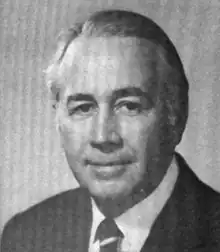| Iowa's 6th congressional district | |
|---|---|
| Obsolete district | |
| Created | 1860 |
| Eliminated | 1990 |
| Years active | 1863–1993 |
Iowa's 6th congressional district is a former U.S. congressional district in the State of Iowa. It existed in elections from 1862 to 1992, when it was lost due to Iowa's population growth rate being lower than that of the country as a whole.
The district was created during the Civil War; it was first filled in the 1862 general election. Its original representative, Asahel W. Hubbard, was from Sioux City in Northwestern Iowa, but redistricting caused the district to be relocated, first to central Iowa (from 1869 to 1874), then to south-central Iowa (from 1875 to 1932), then the Des Moines area (from 1933 to 1942) and then north-central Iowa (from 1943 to 1962). From 1963 to 1992, the district was made up of counties in the northwestern part of the state. Fred Grandy, the 6th district's last representative, was, like its first, a Sioux City native.
List of members representing the district
The district was eliminated as a result of the 1990 census. All of the district was put in the 5th district except for Cerro Gordo County which was put in the 2nd district.
General election history (from 1920)
| Year [1] | Party affiliation | Winner | Number of votes | Party affiliation | Loser | Number of votes | Percentage of votes |
|---|---|---|---|---|---|---|---|
| 1920 | Republican | C. William Ramseyer | 41,644 | Democratic | O.P. Meyers | 21,538 | 66% - 34% |
| 1922 | Republican | C. William Ramseyer | 28,702 | Democratic | James E. Craven | 17,489 | 62% - 38% |
| 1924 | Republican | C. William Ramseyer | 42,843 | Democratic | James V. Curran | 19,028 | 69% - 31% |
| 1926 | Republican | C. William Ramseyer | 27,967 | Democratic | W.L. Etter | 14,193 | 66% - 34% |
| 1928 | Republican | C. William Ramseyer | 43,259 | Democratic | C. Ver Ploeg | 23,065 | 65% - 35% |
| 1930 | Republican | C. William Ramseyer | 25,875 | Democratic | S.F. McConnell | 16,811 | 61% - 39% |
| 1932 | Republican | Cassius C. Dowell | 56,962 | Democratic | Charles S. Cooter | 43,891 | 56% - 44% |
| 1934 | Democratic | Hubert Utterback | 50,828 | Republican | Cassius C. Dowell | 46,074 | 52% - 47% |
| 1936 | Republican | Cassius C. Dowell | 63,026 | Democratic | Harry B. Dunlap | 55,975 | 52% - 46% |
| 1938 | Republican | Cassius C. Dowell | 53,505 | Democratic | Hubert Utterback | 37,056 | 58% - 41% |
| 1940 | Republican | Paul H. Cunningham | 70,707 | Democratic | E. Frank Cox | 64,314 | 52% - 48% |
| 1942 | Republican | Fred C. Gilchrist | 46,843 | Democratic | Edward Breen | 30,802 | 60% - 40% |
| 1944 | Republican | James I. Dolliver | 60,153 | Democratic | Charles Hanna | 40,098 | 59% - 39% |
| 1946 | Republican | James I. Dolliver | 40,640 | Democratic | Oscar E. Johnson | 23,422 | 63% - 37% |
| 1948 | Republican | James I. Dolliver | 55,641 | Democratic | James E. Irwin | 44,002 | 56% - 44% |
| 1950 | Republican | James I. Dolliver | 56,982 | Democratic | Maurice O'Reilly | 30,877 | 64% - 35% |
| 1952 | Republican | James I. Dolliver | 86,842 | Democratic | Francis G. Cutler | 39,245 | 69% - 31% |
| 1954 | Republican | James I. Dolliver | 53,457 | Democratic | Lumund F. Wilcox | 35,137 | 60% - 40% |
| 1956 | Democratic | Merwin Coad | 64,625 | Republican | James I. Dolliver | 64,427 | 50.1% - 49.9% |
| 1958 | Democratic | Merwin Coad | 57,491 | Republican | Robert E. Waggoner | 41,204 | 58% - 42% |
| 1960 | Democratic | Merwin Coad | 70,353 | Republican | Curtis G. Reihm | 60,834 | 54% - 46% |
| 1962 | Republican | Charles B. Hoeven | 66,940 | Democratic | Donaled W. Murray | 47,524 | 58% - 42% |
| 1964 | Democratic | Stanley L. Greigg | 86,323 | Republican | Howard N. Sokol | 75,478 | 53% - 46% |
| 1966 | Republican | Wiley Mayne | 73,274 | Democratic | Stanley L. Greigg | 53,917 | 57% - 42% |
| 1968 | Republican | Wiley Mayne | 100,802 | Democratic | Jerry O. Sullivan | 54,171 | 65% - 35% |
| 1970 | Republican | Wiley Mayne | 57,285 | Democratic | Fred H. Moore | 43,257 | 57% - 43% |
| 1972 | Republican | Wiley Mayne | 103,284 | Democratic | Berkley Bedell | 93,574 | 52% - 48% |
| 1974 | Democratic | Berkley Bedell | 86,315 | Republican | Wiley Mayne | 71,695 | 55% - 45% |
| 1976 | Democratic | Berkley Bedell | 133,507 | Republican | Joanne D. Soper | 62,292 | 67% - 31% |
| 1978 | Democratic | Berkley Bedell | 87,139 | Republican | Willis Edgar Junker | 44,320 | 66% - 34% |
| 1980 | Democratic | Berkley Bedell | 129,460 | Republican | Clarence S. Carney | 71,866 | 64% - 36% |
| 1982 | Democratic | Berkley Bedell | 101,690 | Republican | Al Bremer | 56,487 | 64% - 36% |
| 1984 | Democratic | Berkley Bedell | 127,706 | Republican | Darrel Rensink | 78,182 | 62% - 38% |
| 1986 | Republican | Fred Grandy | 81,861 | Democratic | Clayton Hodgson | 78,807 | 51% - 49% |
| 1988 | Republican | Fred Grandy | 125,859 | Democratic | Dave O'Brien | 69,614 | 64% - 36% |
| 1990 | Republican | Fred Grandy | 112,333 | Democratic | Mike D. Earll | 44,063 | 72% - 28% |
See also
References
- ↑ "Election Statistics,". 2005. Archived from the original on July 25, 2007.
- Martis, Kenneth C. (1989). The Historical Atlas of Political Parties in the United States Congress. New York: Macmillan Publishing Company.
- Martis, Kenneth C. (1982). The Historical Atlas of United States Congressional Districts. New York: Macmillan Publishing Company.
- Congressional Biographical Directory of the United States 1774–present
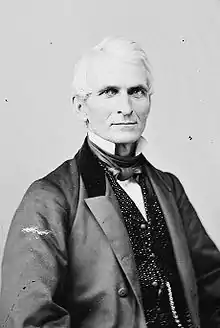
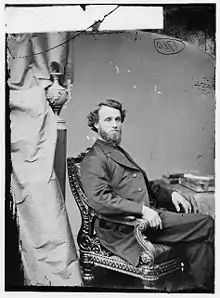

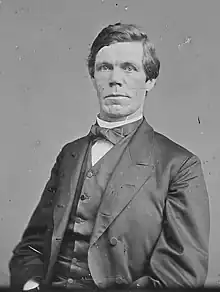

.jpg.webp)
.jpg.webp)

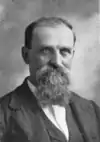

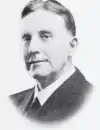
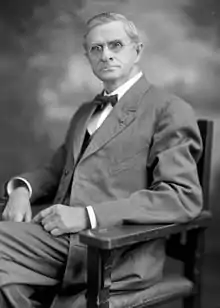
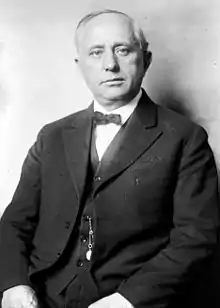

.jpg.webp)
.jpg.webp)

.jpg.webp)

.jpg.webp)

